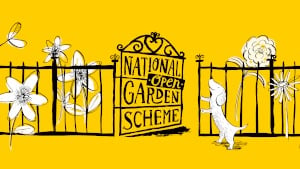About Halton Castle
This garden, with magnificent views across the Tyne Valley, is surrounded by history. Halton Castle is best approached from the north about 1/2 mile east of the old Roman road of Dere Street, (now the A68). The stone pillared driveway entrance off the Military Road ( B6318) takes you through the Roman fort of Onnum, one of 17 such outposts along the length of the wall. The fort occupied a site of about 4 acres. It was built in 122 A.D. and abandoned by the Romans in the fifth century.
Halton Castle comprises a Pele Tower built in 1385 for William Carnaby. The tower was built in response to the frequent Scottish raiding parties and bears the Carnaby coat of arms on the east side. Much of the stone came from the abandoned Roman fort. A Jacobean style Manor house attached to the Pele Tower was built in 1695 by John Douglas, a Newcastle businessman. His daughter married Sir Edward Blackett and the house has remained in the Blackett family to this day.
The garden has herbaceous borders, two very old, and enormous, beech hedges, extensive lawns and shrubs and a wildflower garden. There is a charming chapel with graveyard in the grounds. The chapel has Norman origins. It is still used as a place of worship and quiet contemplation. In the middle of the churchyard (opposite the church door) is a Roman altar.
Aydon Castle, 1 mile to the south, now in the care of English Heritage has been linked with Halton Castle and in the same ownership throughout its entire history. The two castles were rumoured to be linked by a tunnel, as that was the only way to travel safely when the raiding parties were on the rampage.
Note: Halton castle is not open to the public.
.

.jpg)
.jpg)
.jpg)
.jpg)
.jpg)
.jpg)
.jpg)
.jpg)
.jpg)
.jpg)
.jpg)
.jpg)
.jpg)
.jpg)
.jpg)
.jpg)



.jpg)
.jpg)
.jpg)
.jpg)
.jpg)